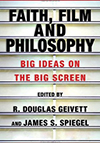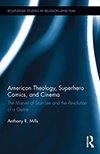- Author(s): Denys Kondyuk
- When: 2016-01
- Where: Journal of Religion & Film
A methodology based on a theological approach similar to those of Hart and Manoussakis could provide an analysis that places an interpersonal and transcendental perspective on films. Of course, films that have been analyzed in this study raise theological topics or address some transcendental themes. Any film could be analyzed from the aesthetic theology perspective, and the five points of Beauty’s definition as transcendental could be applied to theological analysis of different films. The transcendental Beauty is not related to certain characters, and sometimes could be seen in their refusal to see or react to this Beauty. The most important feature of this kind of approach is admitting that Beauty appears in the context of relations, and one's participation (both as a film character and a viewer) is important. The transcendental could not have a form, yet Beauty is revealed through the form. Nevertheless, this form comes from interrelations and by presenting these relations in a film the transcendental is presented. Sometimes it could be the whole plot of a film, and sometimes the transcendental Beauty is revealed only at some moments (the experience of exaiphnes). The Beauty could be seen even in the presentation of godless people or society, as long as relations in the plot could create space for Christ like actions and qualities, or invite a viewer to see transcendence in them.









